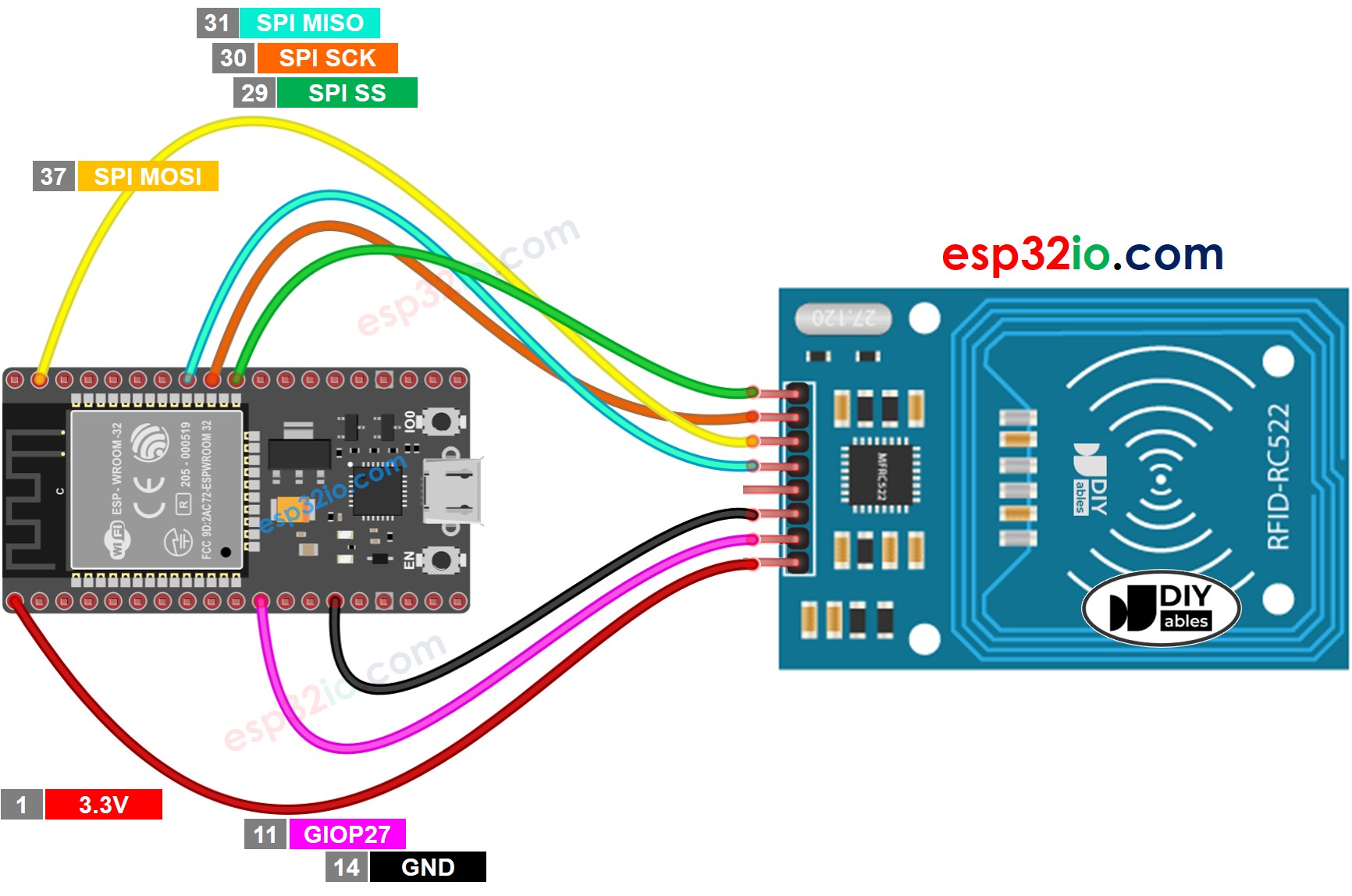

- #Rfid rc522 arduino i2c example serial
- #Rfid rc522 arduino i2c example code
- #Rfid rc522 arduino i2c example download
Lcd. Hi everyone, I don’t know if I am in the correct category but Italian forum doesn’t work Okay, so, I have a NFC tag which works at 13.56MHz. Lcd.setBacklightPin(BACKLIGHT_PIN,POSITIVE) Modified from the original miguelbalboa to also support I2C and UART connections and provide, in addition to normal constant polling, an option to do asynchroneous callbacks. RFID atau Radio Frequency Identification adalah teknologi yang memanfaatkan frekuensi radio sebagai identifikasi terhadap suatu objek. Lab Elektronika Senin, 17 Oktober 2016 ARDUINO, RFID. LiquidCrystal_I2C lcd(I2C_ADDR,En_pin,Rw_pin,Rs_pin,D4_pin,D5_pin,D6_pin,D7_pin) Arduino RFID Library for MFRC522 (SPI, I2C and UART) with asynchroneous callbacks Read/Write a RFID Card or Tag using the ISO/IEC 14443A/MIFARE interface. TUTORIAL RFID READER MIFARE RC522 MENGGUNAKAN ARDUINO. Code for reading RFID Tag/Card with RFID-RC522 and show it's ID on the lcd i2c display I will be eventually porting everything to a PIC32 to be integrated into a larger existing system but was having so.
#Rfid rc522 arduino i2c example code
The board comes with example Arduino code that I am trying to get to work.
#Rfid rc522 arduino i2c example serial
The first code is a simple reading of the TAG’s code, every TAG has its “own” code, and it displays it on the serial monitor and the LCD if wired as well. Hello, I am having trouble getting the MFRC522 chip to work over I2C.
#Rfid rc522 arduino i2c example download
If you’re using LCD i²c you’ll need a library also: Download here. You’ll need the RFID library, this is the one I used to not confuse you: Download here, but you can use some other ones that are better like MFRC522… You have HV pins for High voltage (5v) from Arduino and LV pins for low Voltage for the Module. The wiring, but it won’t last for long time usageįor better use as mentioned you should wire the pins from the module with a level shifter then with the Arduino Uno.Īs you can see it’s technically pretty simple to use, I’ll try one when I receive it. This wiring will do the work but won’t last for long, as I had trouble using a dodgy version of a level shifter. This is not a tutorial that I’m proud of, now I check after couple of years it needs a revisit, and a proper project, but this will get you started and push through your school project as I did before. The example code and every other code I find on the internet work pooling the device in order to know if there is a new card present, but I intend to work with a interrupt-driven approach. There are other versions that are re-writable which means you can modify the Tag data, and it could be very interesting project in case you want to make a credit system to grant access for only few times… or store data. I have a project using the RC522 RFID module with my Arduino Uno board and miguelbalboas rfid library. IMPORTANT : Don’t forget that the module is powred with 3.3v from Arduino and you can use the other pins normally but for better use, you should use a level shifter (5v to 3. For the tags there are two types, here I only used one as shown in the video, it’s not” re-writable”, it has a fix ID. Hello everybody and welcome to this quick tutorial, today we gonna use a Mifare RC522 RFID module with an Arduino Uno and an optional LCD i2c screen. The RFID-RC522 will permit you to read RFID Tags, identify their IDs, you can use it in door lock projects, garages, safes…. In case it’s your first time using LCD i2c Screen here’s a tutorial: Arduino LCD I2C simple use and direct write from serial monitor Das Modul habe ich über ebay ersteigert und je nachdem wie. RFID bedeutet übersetzt radio frequency identification (laut Wikipedia ). In diesem Tutorial möchte ich das Modul RFID RC522 erklären und an einem kleinen Beispiel zeigen wie man diesen betreibt.

I didn’t know about this so my RC522 is kinda broken, I couldn’t use it the proper way. Arduino Lektion 20 Teil 1: RFID RC522 Kartenleser. IMPORTANT: Don’t forget that the module is powred with 3.3v from Arduino and you can use the other pins normally but for better use, you should use a level shifter (5v to 3.3v) to not damage the component over time. Using the RC522 binary sensors you can then create individual binary sensors that track if an RFID tag is currently detected by the RC522.

This component is a global hub that establishes the connection to the RC522 via I☬ (also available over SPI). * * Created by ArduinoGetStarted.Hello everybody and welcome to this quick tutorial, today we gonna use a Mifare RC522 RFID module with an Arduino Uno and an optional LCD i2c screen. The rc522i2c component allows you to use RC522 RFID controllers with ESPHome.


 0 kommentar(er)
0 kommentar(er)
